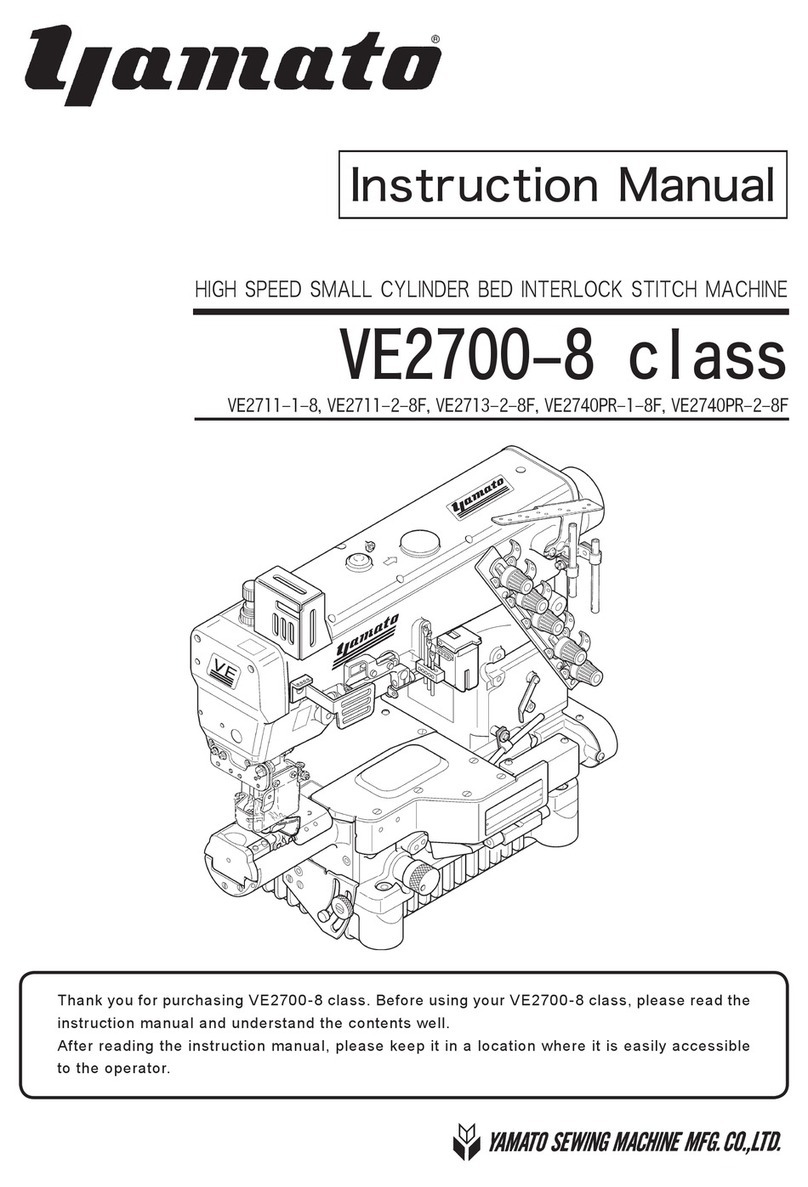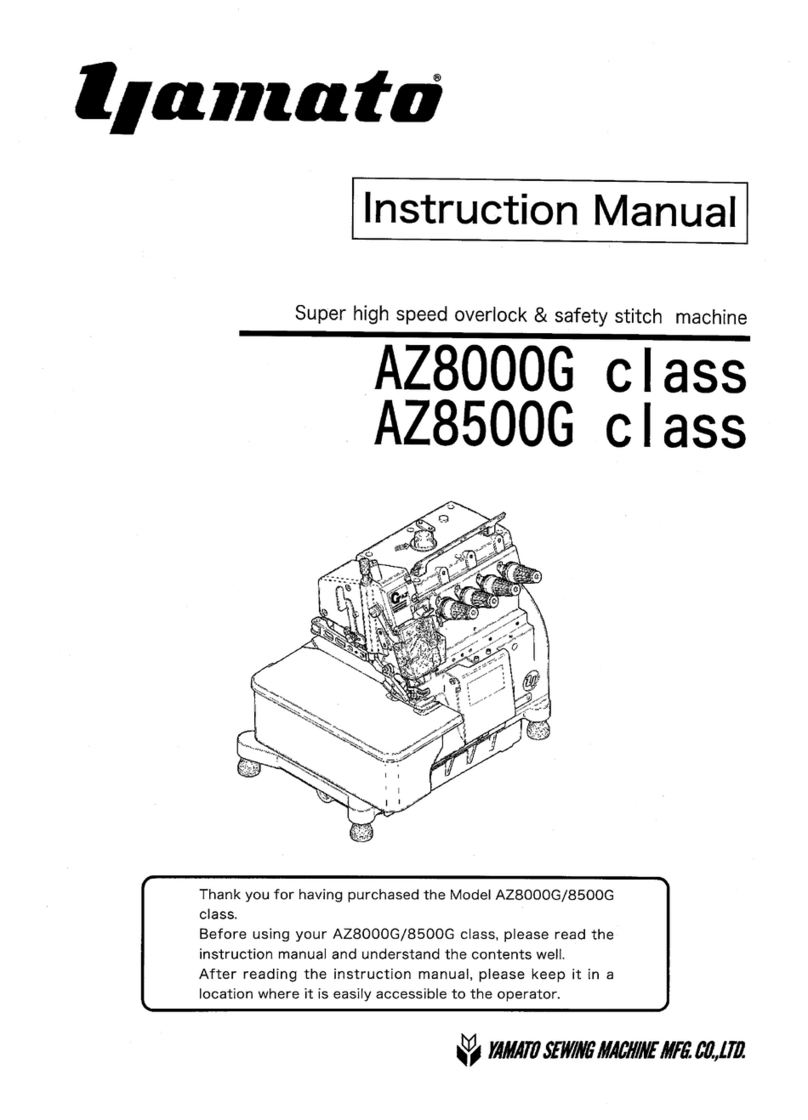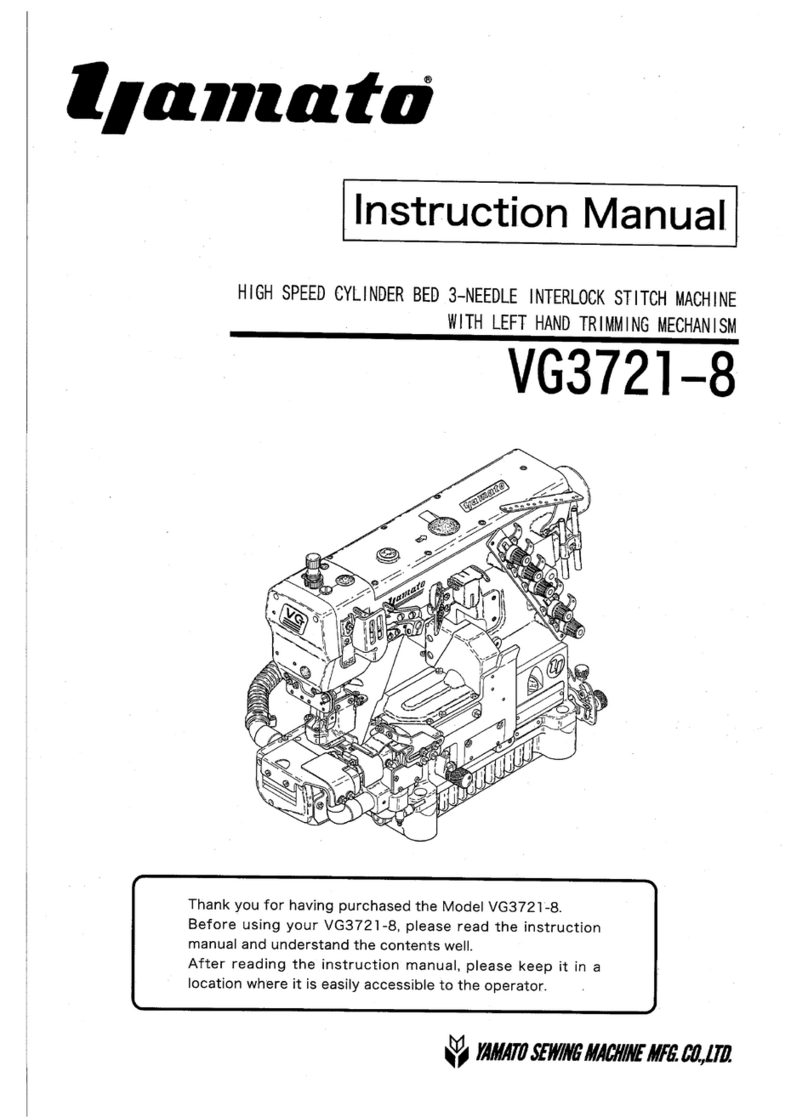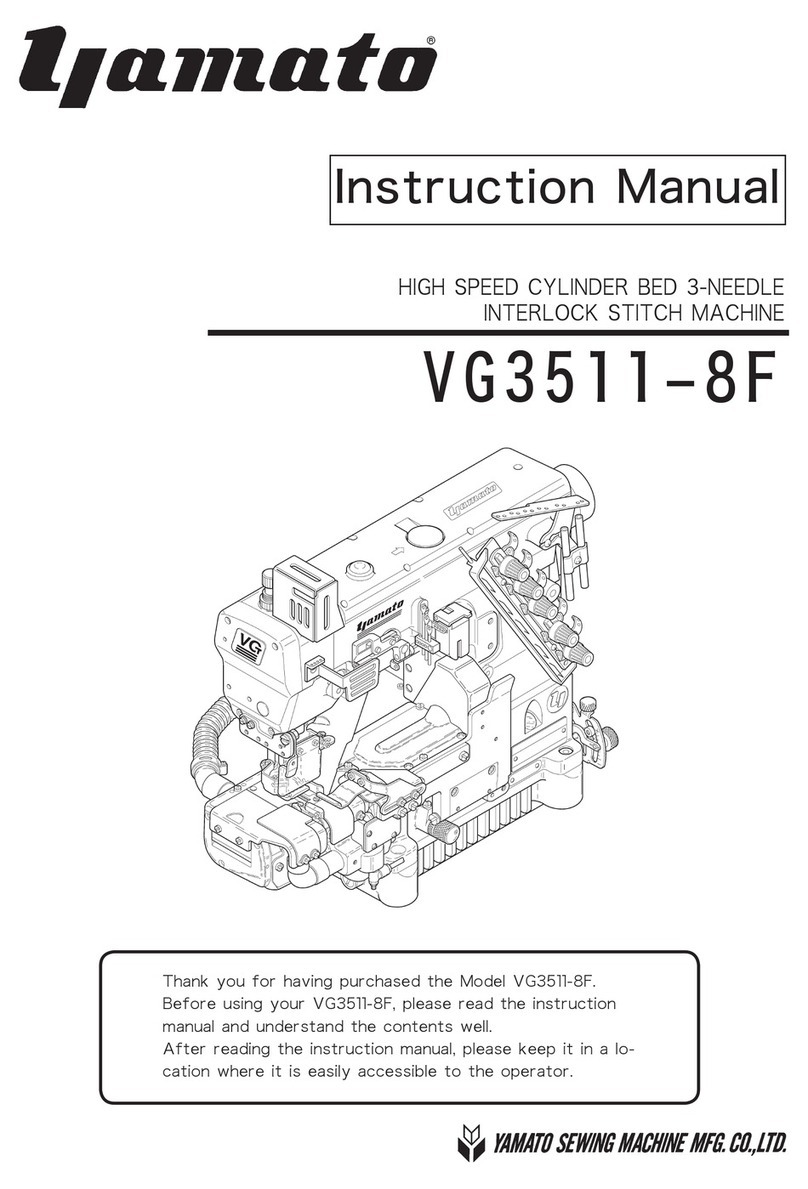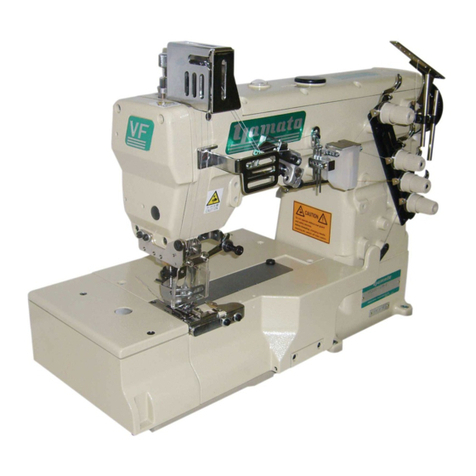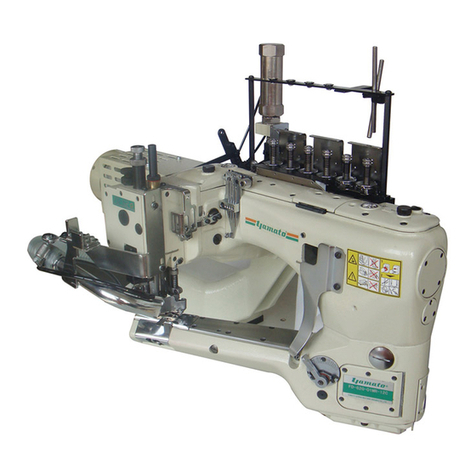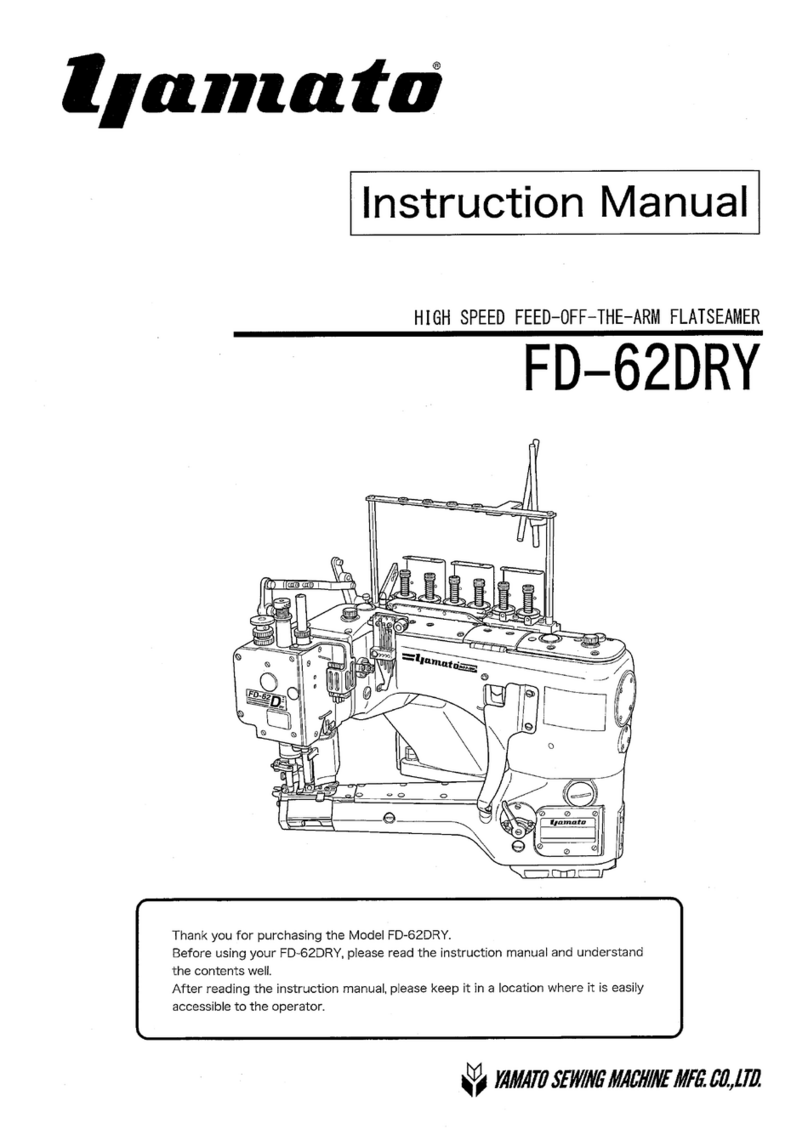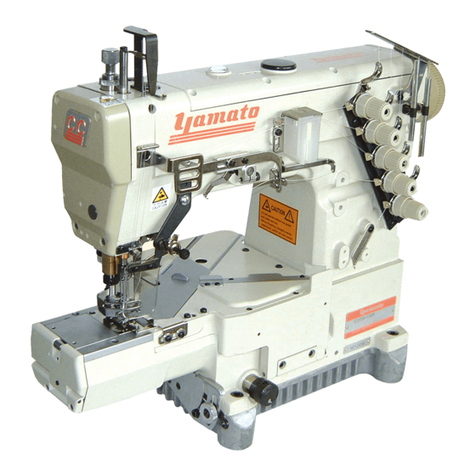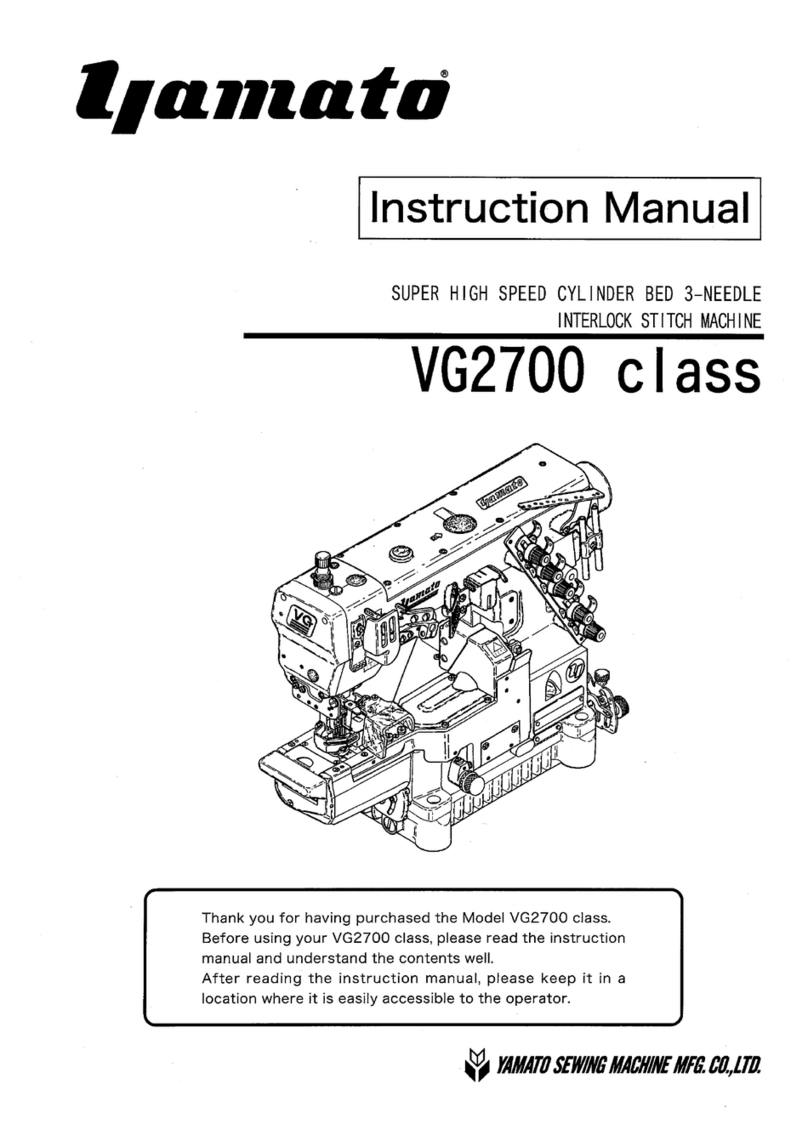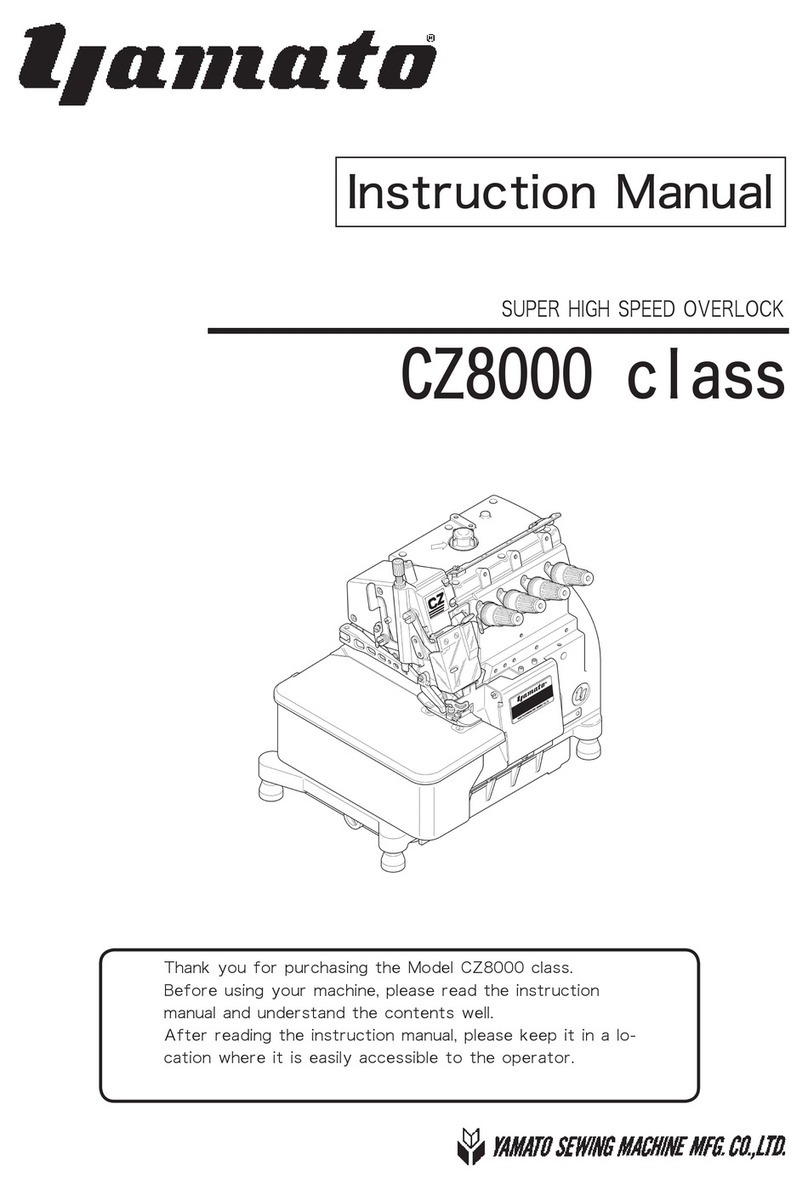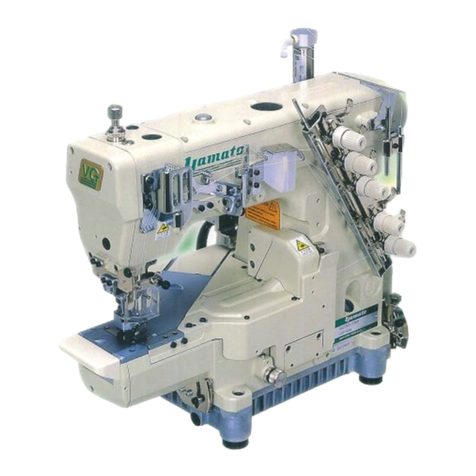
WARNING
3.6 Maintenance, inspection and repair
○ Maintenance, inspection, and repair must be
performed by staff that have received special
training and fully understand and follow the
information in the instruction manual.
○ Be sure to turn off the power supply switch
and make sure the sewing machine and motor
completely stop before the maintenance,
inspection, and repair. (If the machine is
using a clutch motor, take care that the
motor keeps turning for a while even after
turning off the power supply switch.)
4. Recommended check points for maintaining
machine performance
(1) Perform regular cleaning of the machine parts
by following the instruction manual.
(2) Perform regular inspection of the lubrication
oil by following the instruction manual, and
rell or replace the oil as required.
(3) Because the oil-proof parts use rubber, their
oil-proof performance is reduced over time.
○ If the seals or other stationary parts
fall off or begin to lose their sealing
performance, replace them with new parts.
○ The replacement period for parts used in
the movable sections varies depending
on the machine operating conditions,
environment, maintenance, and oil used,
but replacement every several years is
recommended.
(4) For details about the replacement procedure,
please contact your local dealer or Yamato.
WARNING
3.5 During operation
○ Be sure to operate the sewing machine using
the safeguards such as belt cover, nger
guard, and eye guard.
○ Never place your nger, hair or objects under
the needle or close to the moving parts while
operating the sewing machine.
○ Be sure to turn off the power supply switch
when threading or replacing the needles.
○ Never place your hands close to the knives
(upper and lower knives) when operating the
sewing machine with the trimming devices.
○ Be sure to turn off the power supply switch
when terminating the sewing work or leaving
the sewing machine.
○ In the event of the power failure, be sure to
turn off the power.
Also, if the sewing machine malfunctions,
makes abnormal sound or emits unusual odors
while operating, be sure to turn off the
power supply switch.
○ While operating the machine, wear clothing
that cannot be caught in the machine.
○ Do not put any tools or other unnecessary
objects on the machine table while running
the machine.
○ If a clutch motor type is used, it will
continue running for a while even after the
power is turned off. Therefore, be careful
because the machine could start running by
pressing the machine pedal.
○ If a servomotor is used, the motor does not
produce noise while the machine is at rest.
Be sure not to forget to turn the power off
in order to prevent accidents caused by
abrupt starting of the machine or motor.
○ To prevent entanglement accidents in machines
with a puller mechanism, keep your hands,
hair, and clothing away from the machine.
○ Do not attempt to modify the machine at your
own discretion. We are not responsible for
accidents caused by such modication.
○ Use genuine Yamato parts when repairing the
machine and/or replacing the parts. We are
not responsible for accidents caused by any
improper repair/adjustment and substituting
other parts for those manufactured by Yamato.
○ Turn off the power supply switch if removing
or replacing any parts or during adjustment
of the sewing machine.
○ Be sure to also remove the gasket if the
cover is removed for maintenance, inspection,
and repair. If the gasket is not removed, the
edge of gasket may cause injury.
○ Do not pull the cord when removing the plug.
Be sure to hold the plug itself.
○ A high voltage is applied inside the control
box. Turn off the power supply switch and
wait for at least ve minutes before opening
the cover.
○ Be sure to replace the safety devices and/
or safety covers if removed for maintenance,
inspection and repair.
○ After performing maintenance, inspection and
repair, make sure that turning on the power
does not pose any danger to you.
When operating the machine for the rst time
after work is performed, run at low speed to
check for abnormal sounds or other problems
before performing high-speed operation.
